Suzuhiro Kamaboko is a famous kamaboko shop that has been in operation for over 150 years. I headed to Suzuhiro Kamaboko Village to try my luck at making kamaboko from scratch for the first time.
2019.08.22
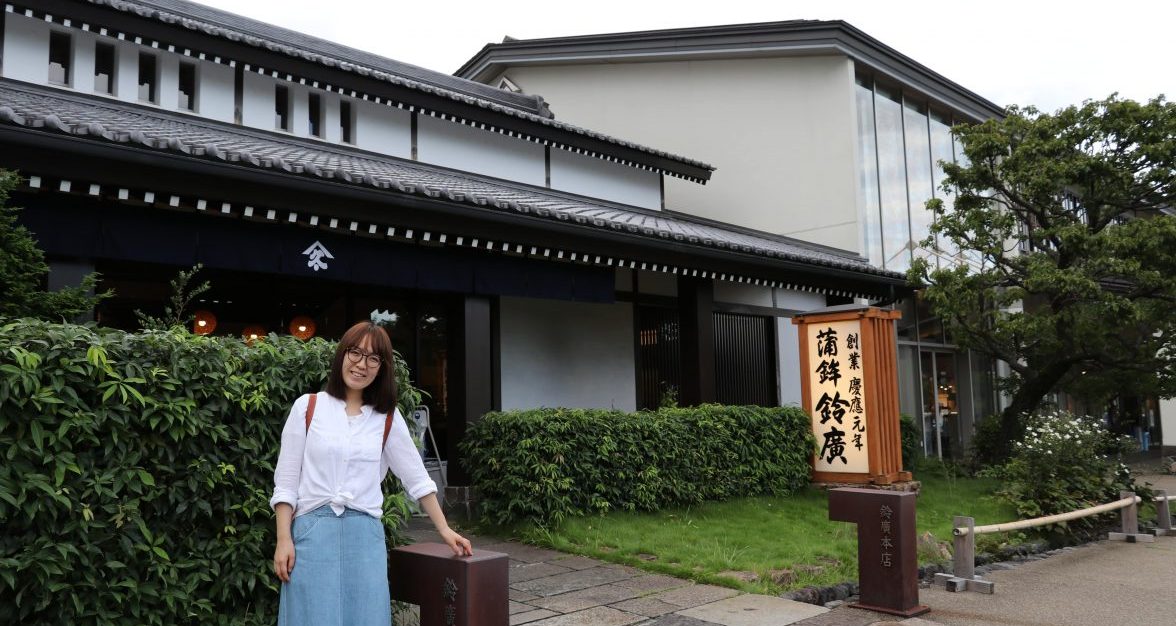
Suzuhiro Kamaboko is a famous kamaboko shop that has been in operation for over 150 years. I headed to Suzuhiro Kamaboko Village to try my luck at making kamaboko from scratch for the first time.
Kamaboko is Japanese traditional fish product with high nutritional value. It’s usually eaten on New Year’s and on holidays, or given as a souvenir or gift. It’s packed with protein and low in fat, making it a popular diet food.
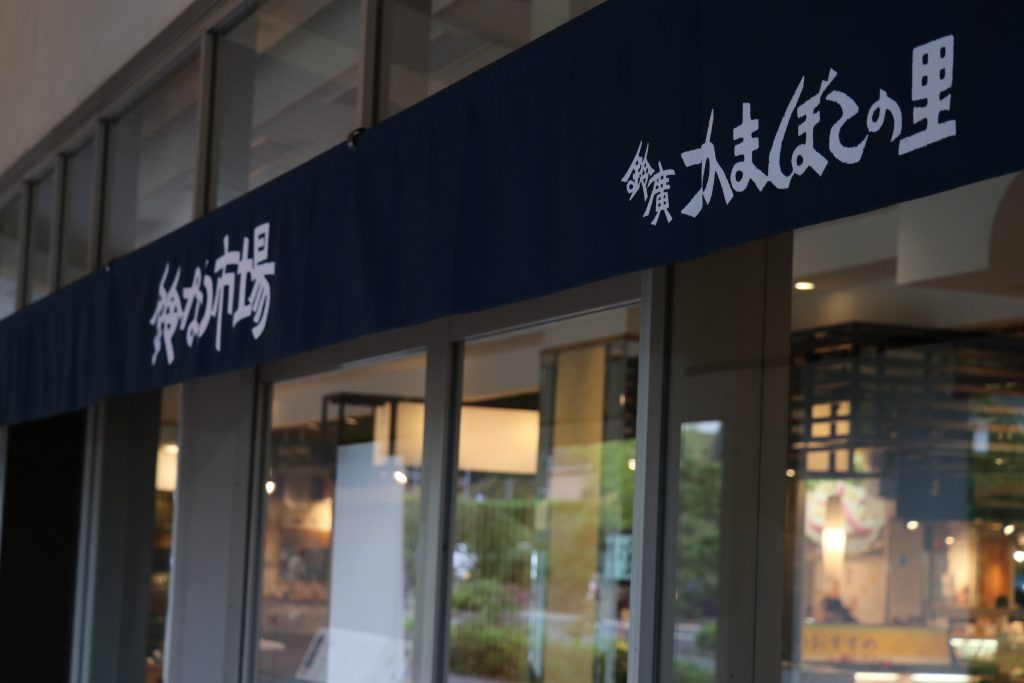
Kamaboko Village, Suzunari Market
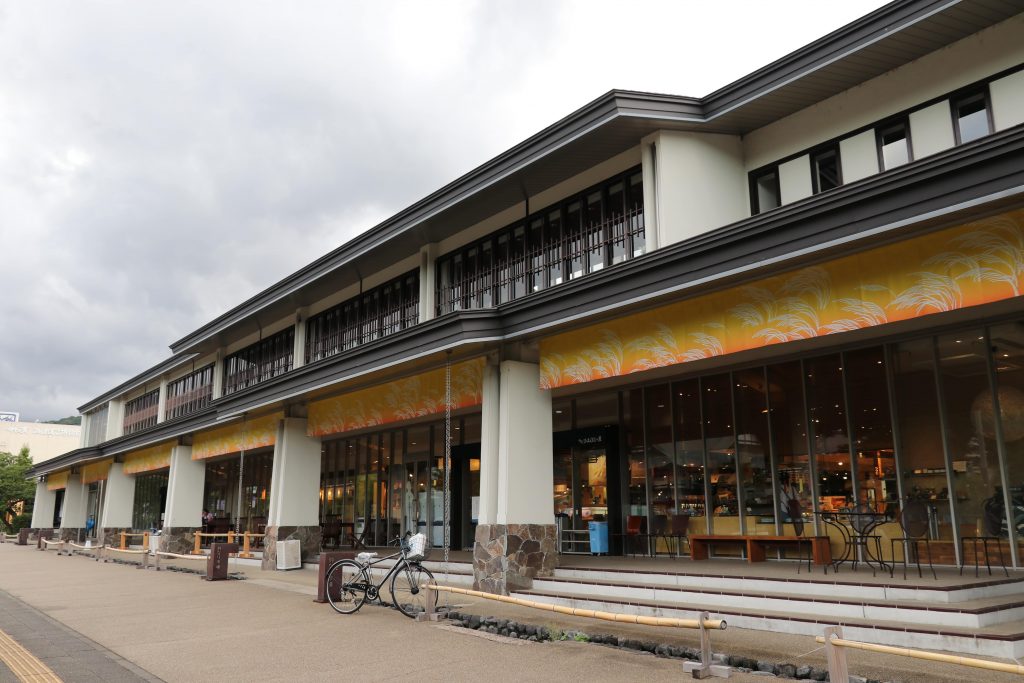
Over 300 different products in stock!
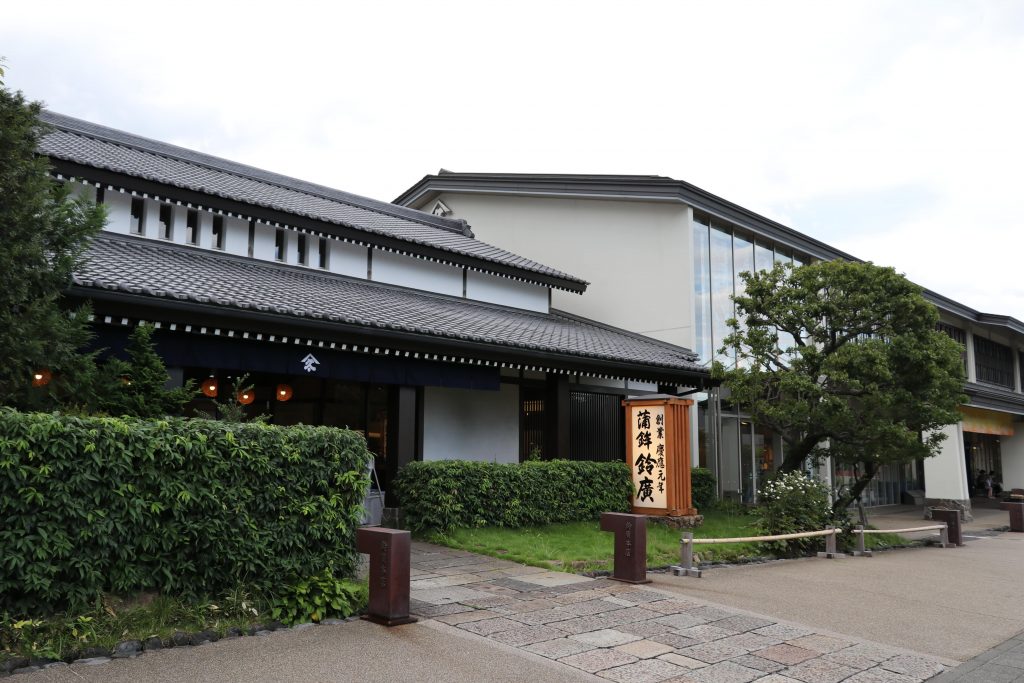
Suzuhiro Kamaboko Main Store
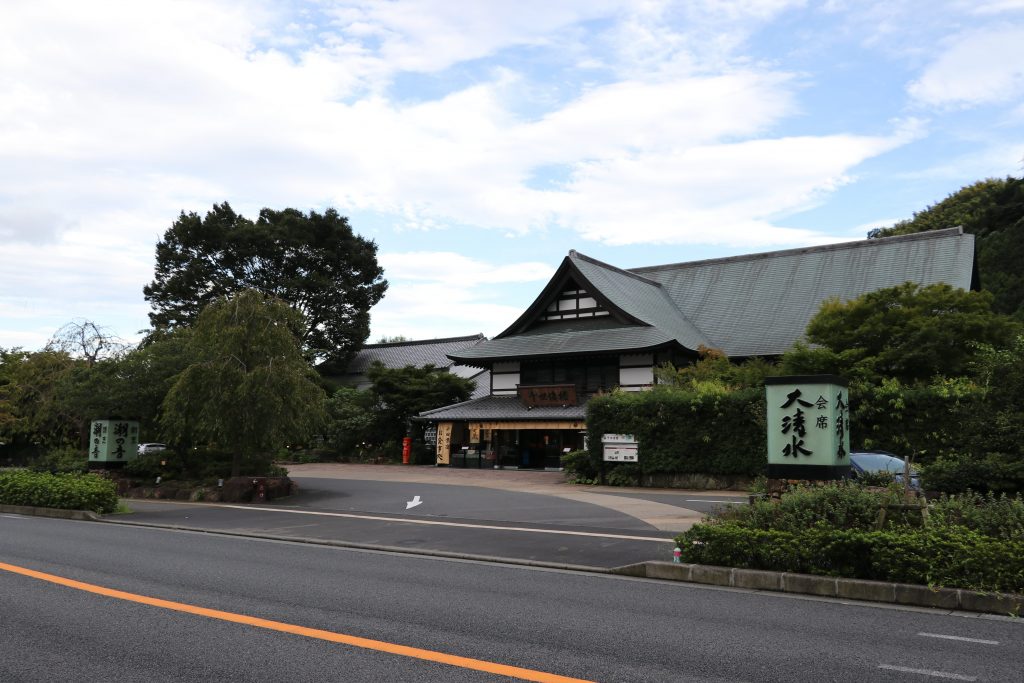
Chouwarou Restaurant
Suzuhiro Kamaboko Village is located in Fumoto, Hakone. It’s home to Suzunari Market, which specializes in kamaboko, sweets and general goods. Here you can also make your own kamaboko, and indulge in nature’s bounty at a variety of restaurants. Easily accessible from the heart of Tokyo, it’s perfect for a day trip, and if you happen to be in Hakone, a pleasant side-trip as well.
To reach Kamaboko Village, you can take the Tokaido shinkansen or the Odakyu Line from Odawara Station. At Odawara, hop onto the Hakone Tozan Line and get off at Kazamatsuri Station. Suzuhiro Kamaboko Village is conveniently located right near the station. From Tokyo, you can ride the shinkansen and arrive in about 60 minutes. Alternatively, you can take the Romance Car from Shinjuku, and arrive in 90 minutes.
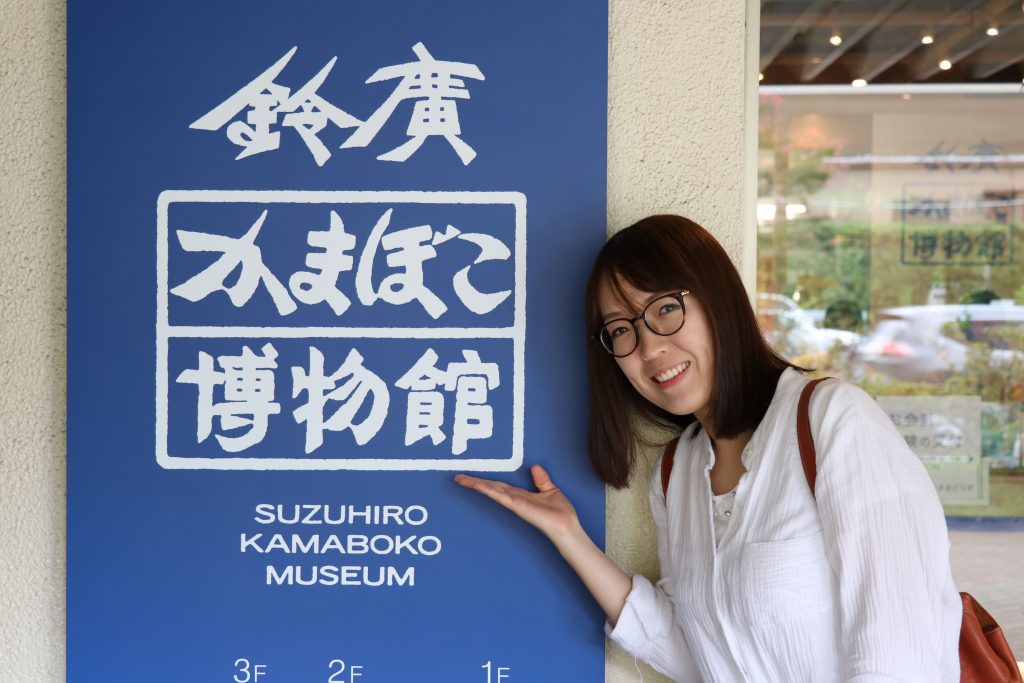
An interesting museum where you can try out all sorts of fun activities.
Once you reach Suzuhiro Kamaboko Village, head over to the counter on the first floor. Make sure you don’t lose the ticket that’s handed to you! The handmade kamaboko workshop is popular, so it’s best to reserve your spot over the phone or online in advance. Come to the 1st floor about 10 minutes before your reservation. Put on your hair net and apron and move to the spot designated on your ticket. Write your name on your kamaboko board, and you’re ready to go.

Special kamaboko knife, board, and fish paste.
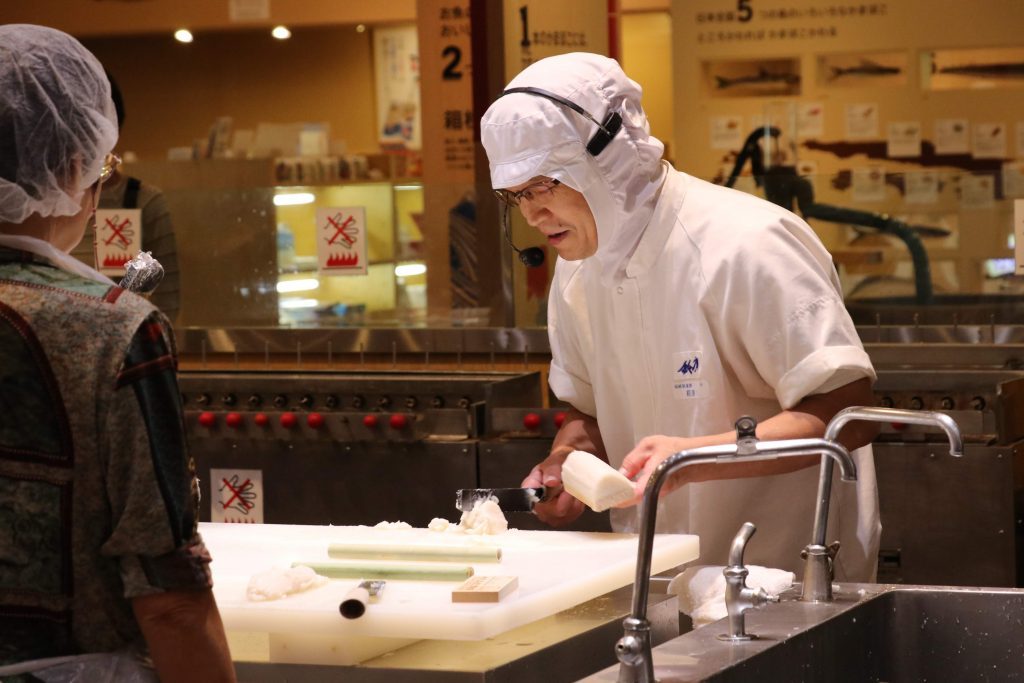
Finished in the blink of an eye. That’s the skill of an artisan!
First the artisan will do a demonstration. There is a large monitor, so no matter where you’re standing, you have a good view. The artisan made it look simple, but it’s actually quite a challenge to get it right.
There are many different ways to make kamaboko. For this activity, we used the itatsuke or board method.
①Knead the fish paste well.
The fish paste comes already prepared. First, with your special kamaboko knife, spread the paste to the left and right over and over. Gradually the paste becomes stickier and stickier, and gets stuck to the knife, so kneading becomes quite a challenge. It was more difficult than I thought it would be.
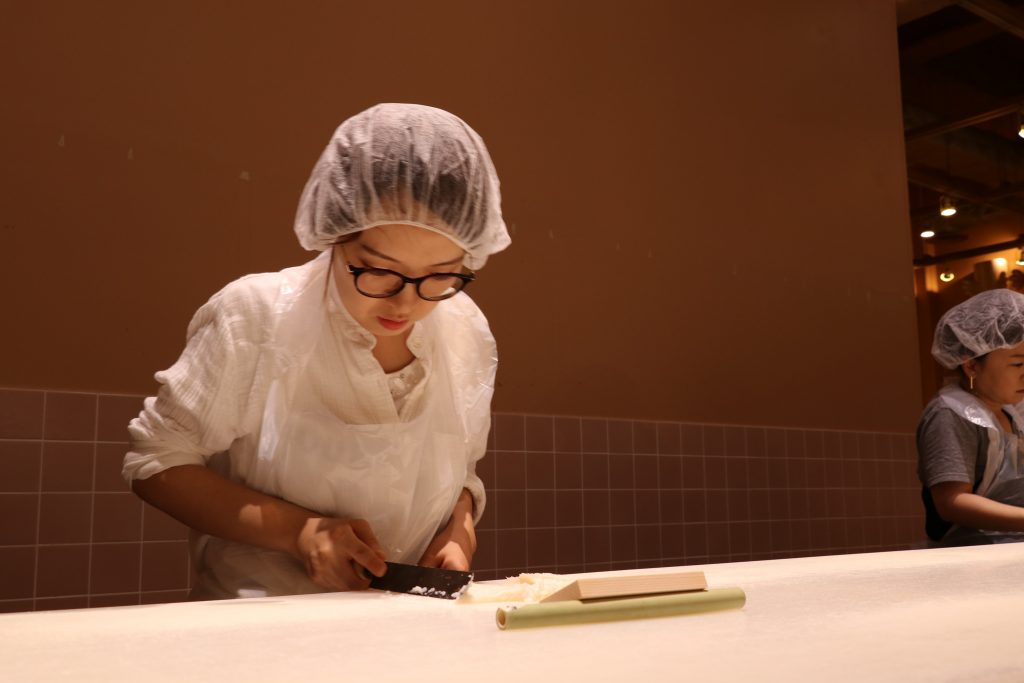
I look like a pro.
②Once you get the paste nice and sticky, gather it onto the board. Make sure you don’t stick it on the side your name is on.
Spread out the fish paste. Gather a small portion from the edge and gather it on the board, then with your knife move the rest over little by little. If you try to do it all at once, the fish paste will fall off.
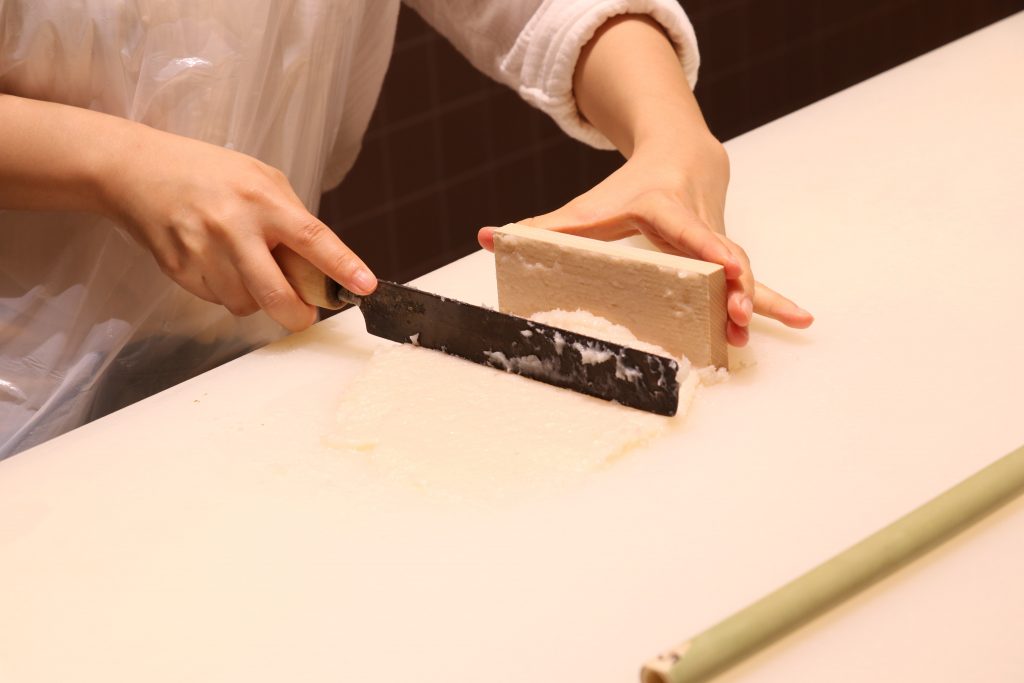
Wasn’t too bad up to here.
③Mold into a nice shape with your knife.
You can’t compare it to the artisan’s kamaboko, but I think I did pretty well for my first try.
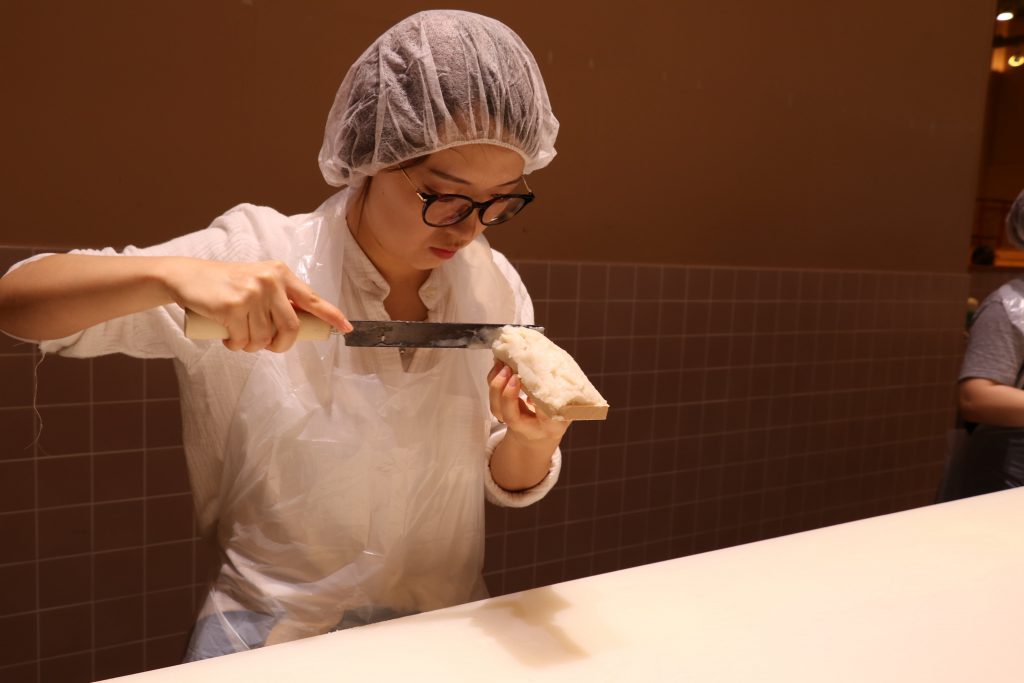
I look so intense.
④Now it’s on the board! All that’s left is to steam it!
It takes some time to steam the kamaboko. After the activity has ended, it takes about 70 minutes until it’s done. Don’t forget to pick up your kamaboko before the museum closes. There are no preservatives added to the kamaboko you make, so it will expire quickly. Make sure to store it in your refrigerator and eat it within 3 days.
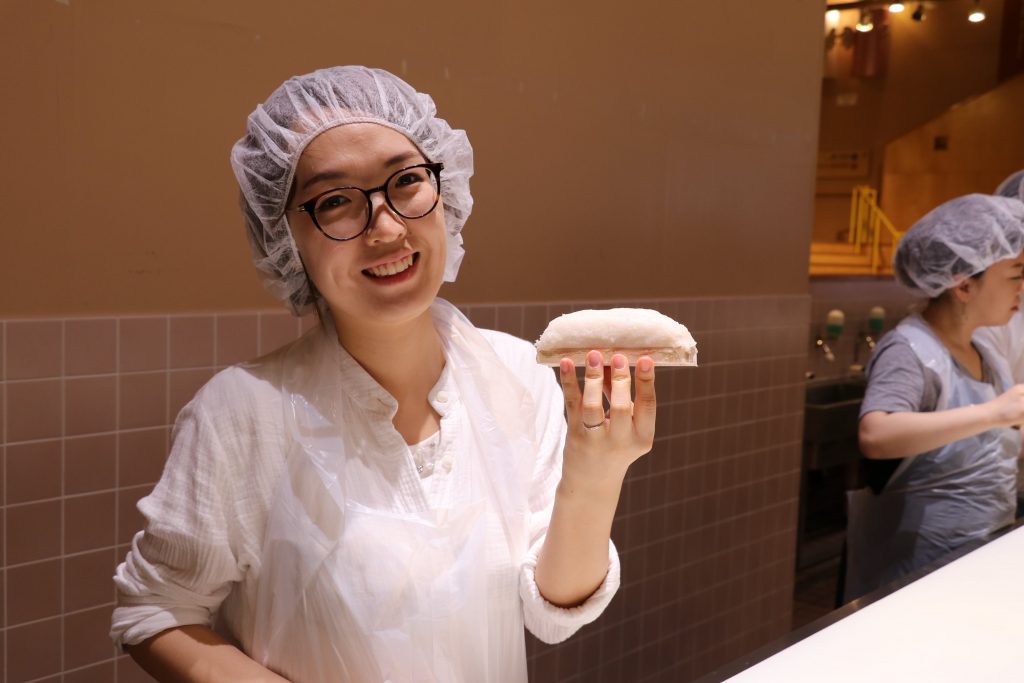
Ta-da! My very own kamaboko! It kind of looks like a mountain…
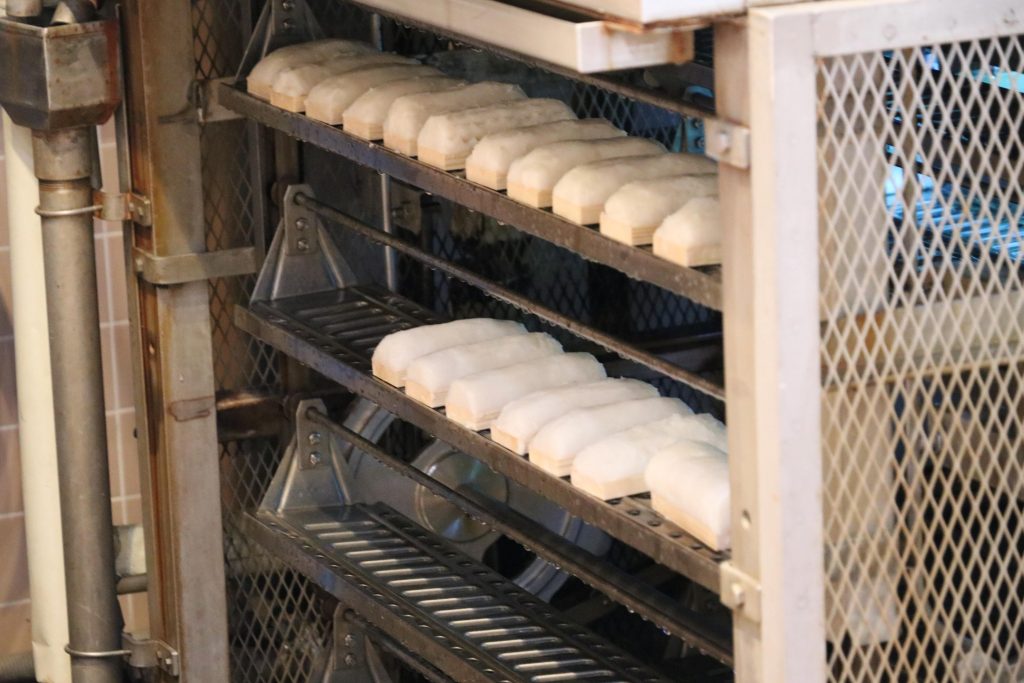
After this they get steamed. I’m dying to get a taste!
After the handmade kamaboko workshop ends, the staff will take your picture for a small fee. Let them know if you’re interested.
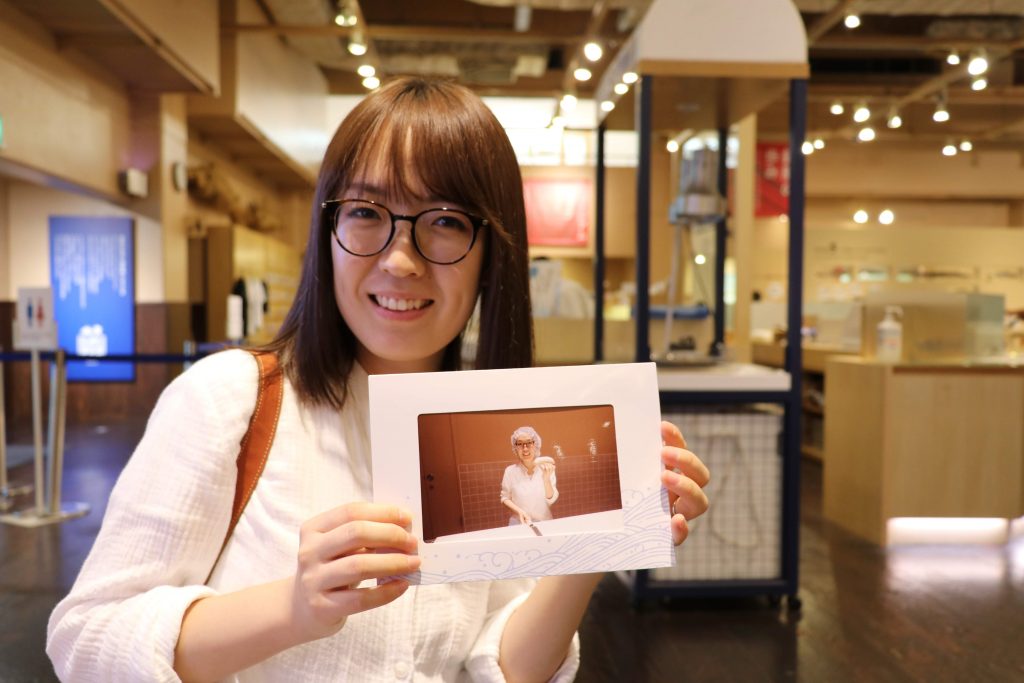
I made some good memories!
①Knead the fish paste twice.
The way you knead it is the same as how you kneaded the kamaboko, but you don’t need to do it for as long. Just twice and you’re good. Mold your chikuwa into an oblong shape, but be careful not to make it too long! Leave about 4cm on each side of your bamboo stick to ensure it grills nicely.
②Wrap the fish paste around the bamboo stick
Place the bamboo stick in the middle of the fish paste and use your knife to pack the fish paste tightly around the bamboo stick.
③Finish shaping your chikuwa. All that’s left is to grill it!
You can pick up your chikuwa 20 minutes after the activity ends. They’re delicious hot off the grill, so make sure to pick up your chikuwa when it’s ready.
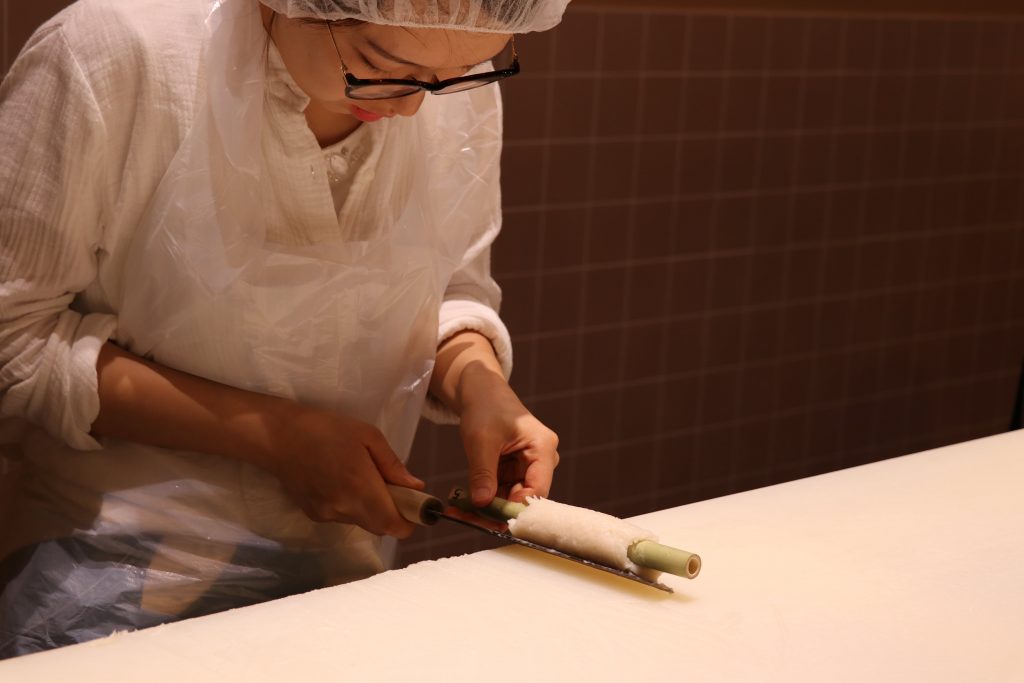
Fun and easy!
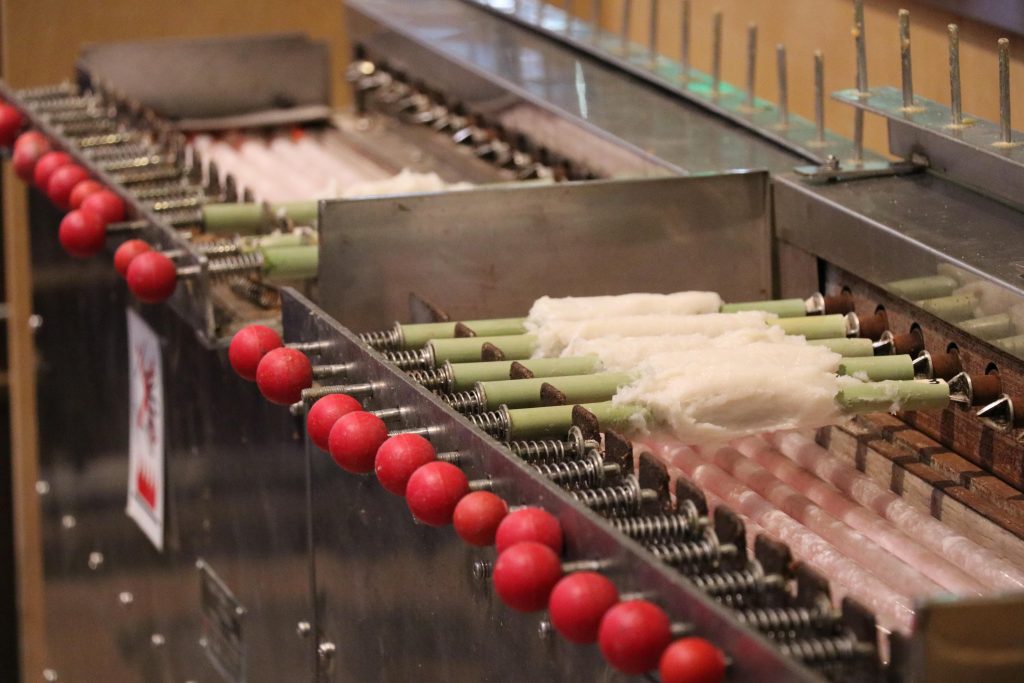
Round and round they go.
After 20 minutes your chikuwa is ready to eat! This was my first freshly grilled chikuwa since coming to Japan. It was so tasty and satisfying that I felt I could devour several more on the spot.
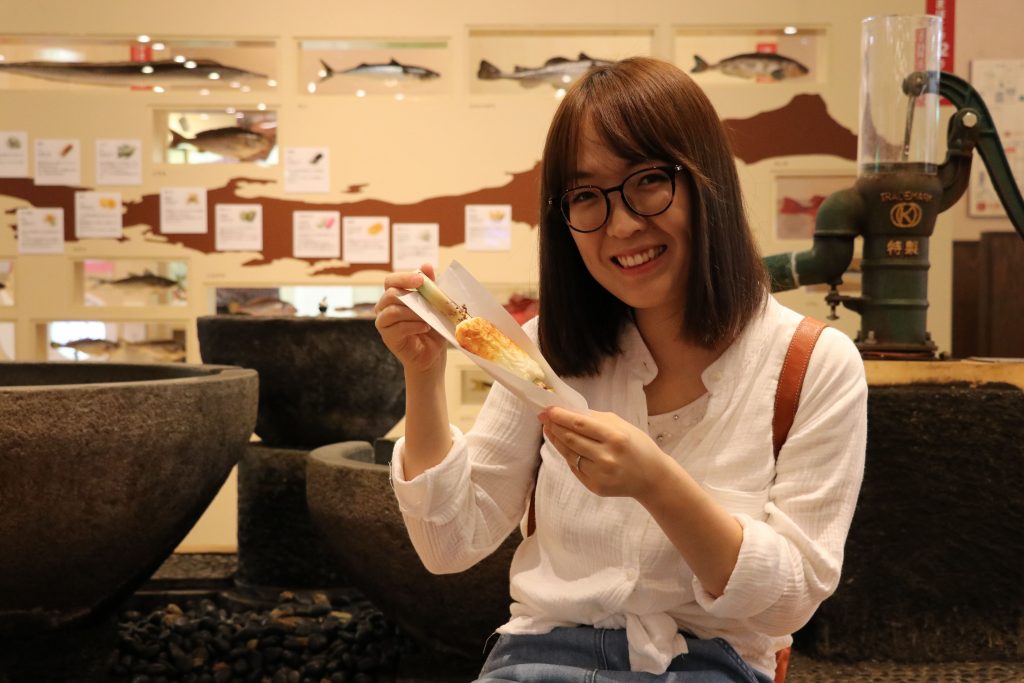
Behold the cuteness of my freshly grilled chikuwa.
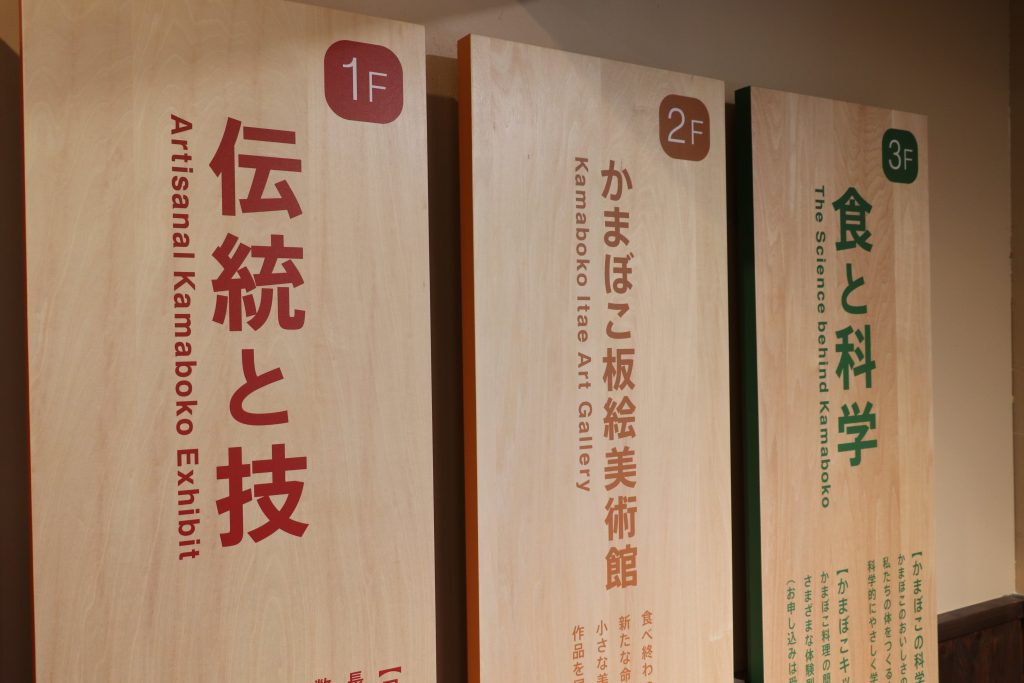
After finishing my chikuwa, I explored the rest of Suzuhiro Kamaboko. There is a museum that spans 3 floors of the building.
1st Floor: Tradition and Skill
Here you can get up close and personal with kamaboko. The handmade kamaboko and chikuwa workshops are held on the 1st floor, and there is also an area where you can see local artisans at work in the Handmade Kamaboko Workshop. There is also a gift shop where you can do a little shopping before you head home.
If you look around closely, you can see QR codes in several places for an English and Japanese audio guide. You can control it from your cellphone, so it’s really handy.
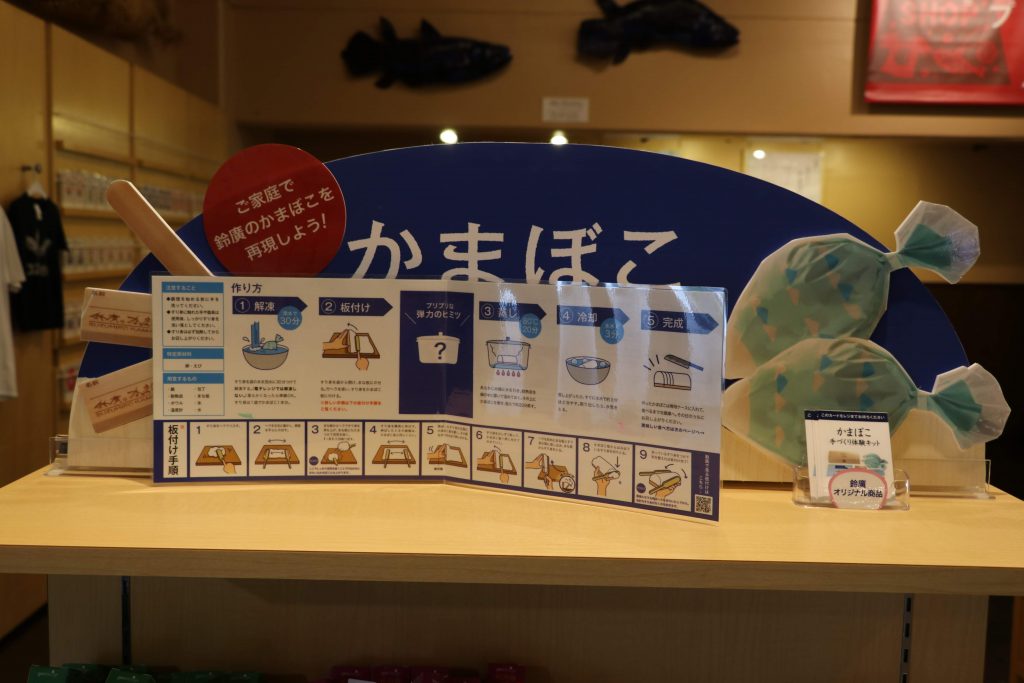
Handmade kamaboko kit. Make your own kamaboko at home!
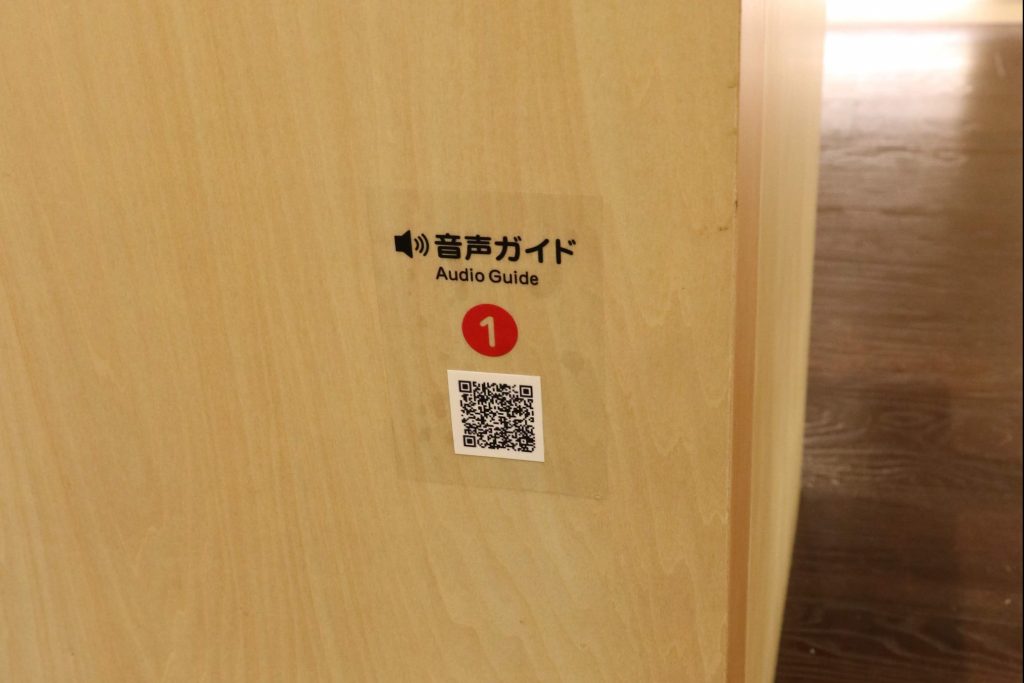
Listen to the audio guide to uncover the secrets of kamaboko.
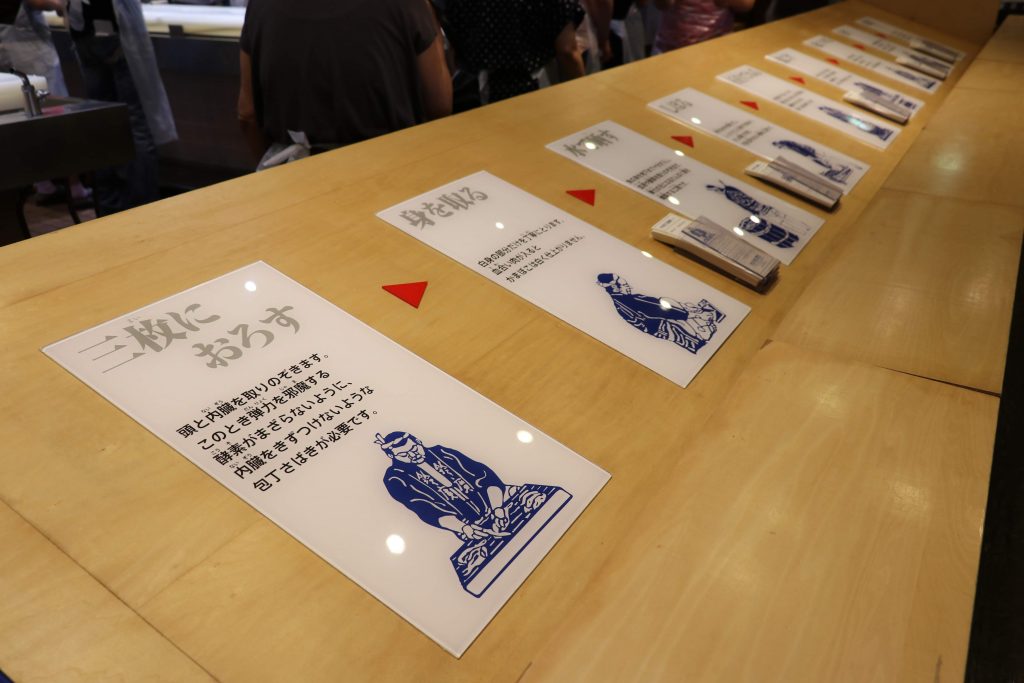
The process of making kamaboko made easy to understand.
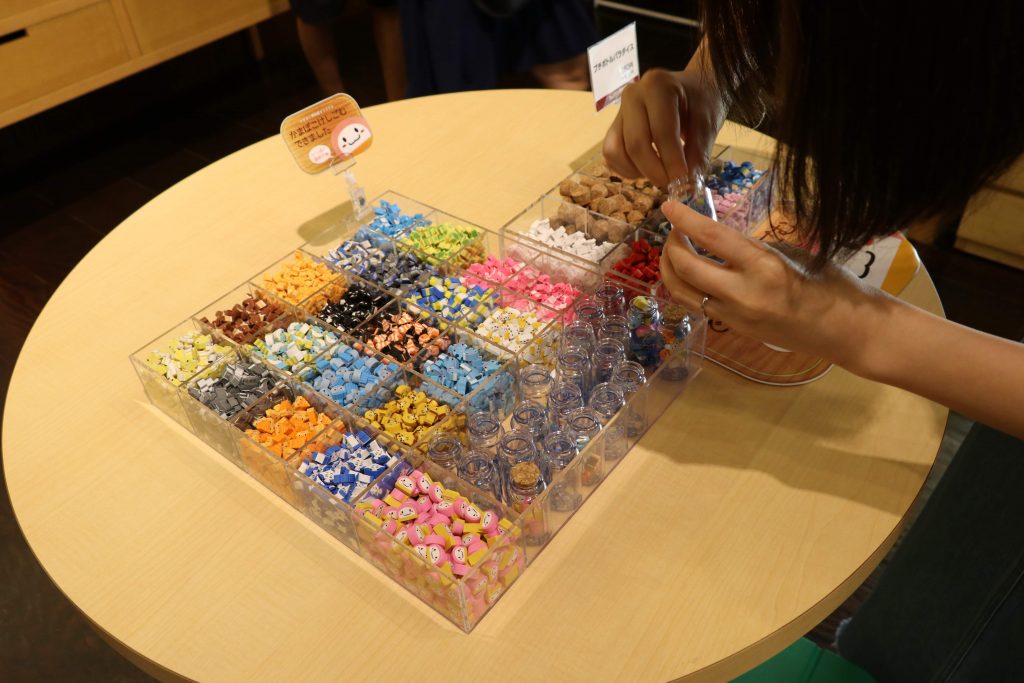
Cute and tiny kamaboko erasers.
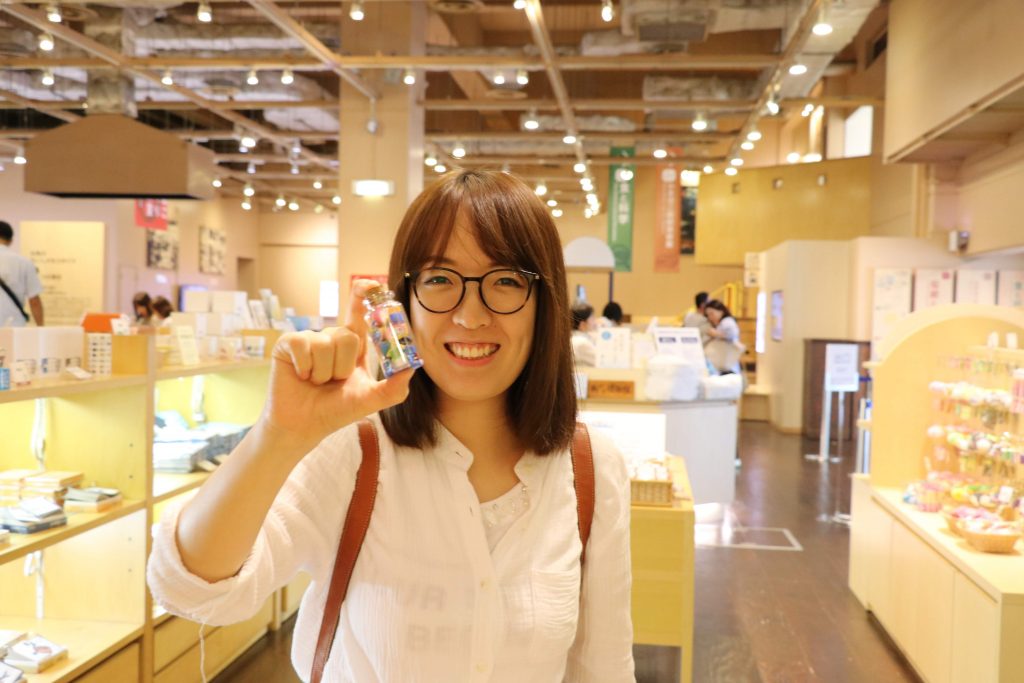
This one’s coming home with me!
2nd Floor: Kamaboko Board Art Museum
Kamaboko boards can be transformed into art?!
The Kamaboko Board Art Museum displays works from all the way back to the 1983 International Kamaboko Board Art Contest. Art can be submitted to the museum to be considered for display. Many works by famous artists and illustrators can be viewed, and the art on display changes every 4 months. Isn’t it wonderful how kamaboko boards themselves can become such unique art?
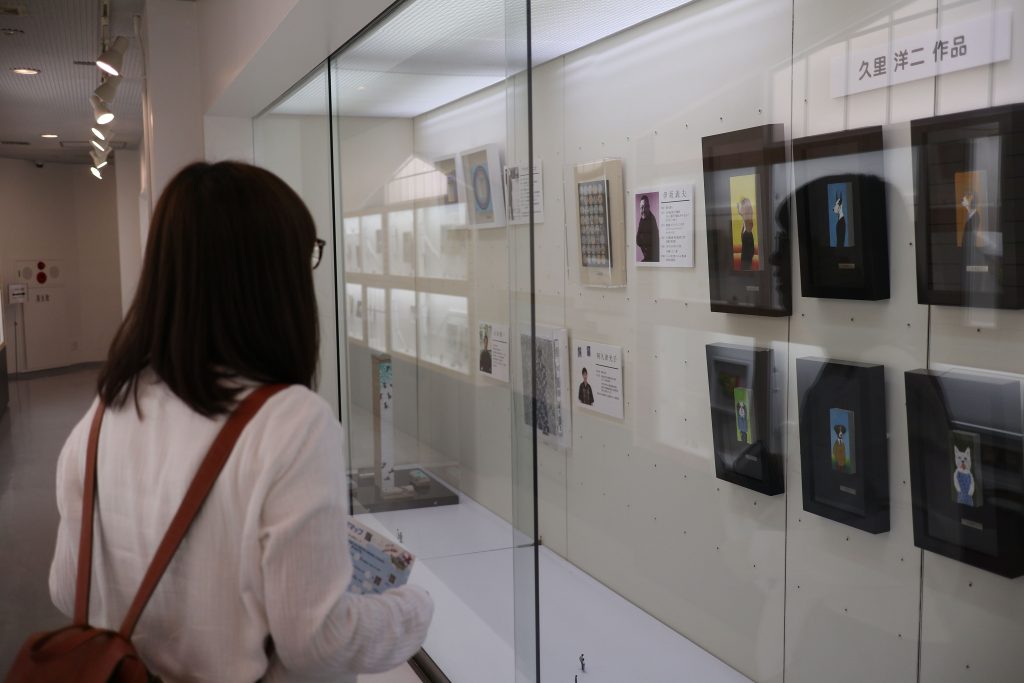
Completely transformed into art, they look nothing like kamaboko boards!
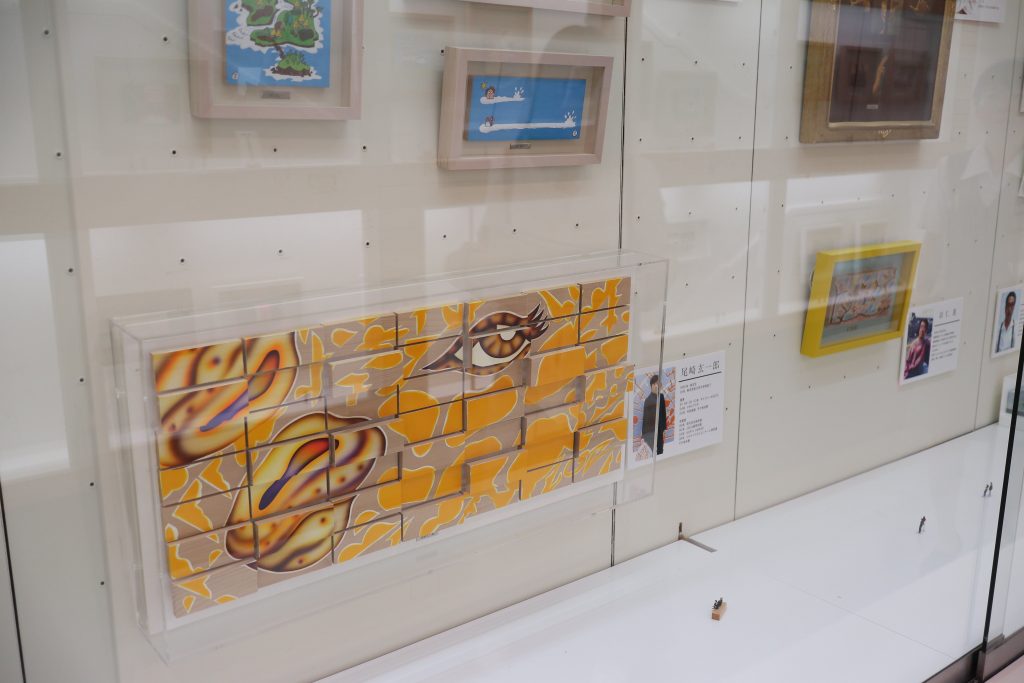
Looks like graffiti. Cool!
3rd Floor: Food and Science
On the 3rd floor of the museum, you can engage the five senses while learning the secret behind kamaboko’s deliciousness and high nutritional value. You can make fried kamaboko here as well. Use any tool you’d like to mold the shape with your own unique touch, then fry it up.
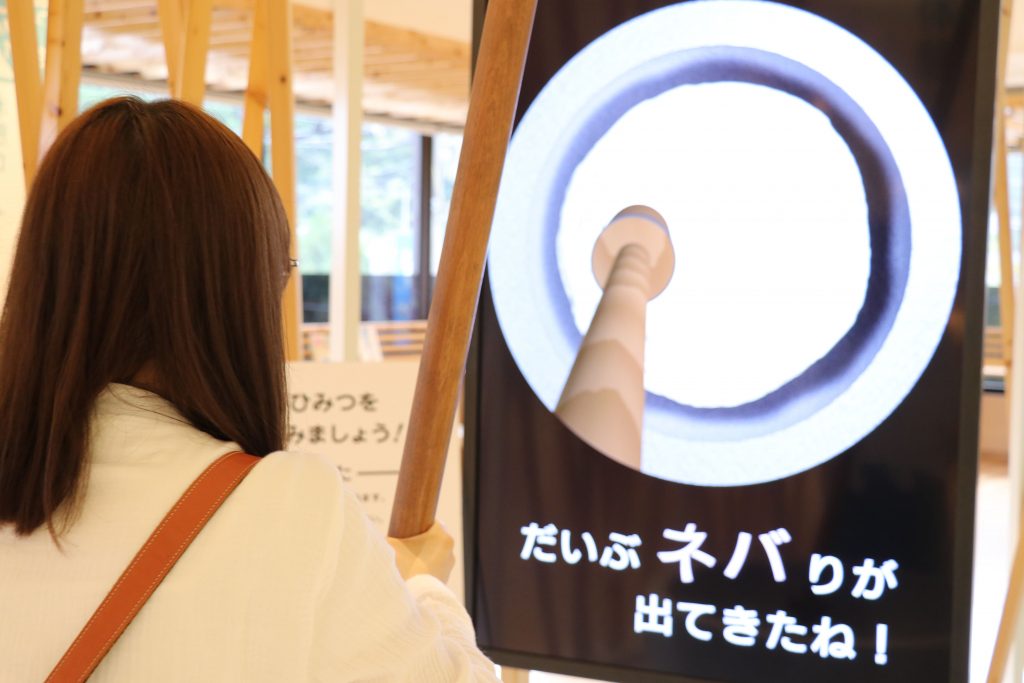
Let’s make fish paste!
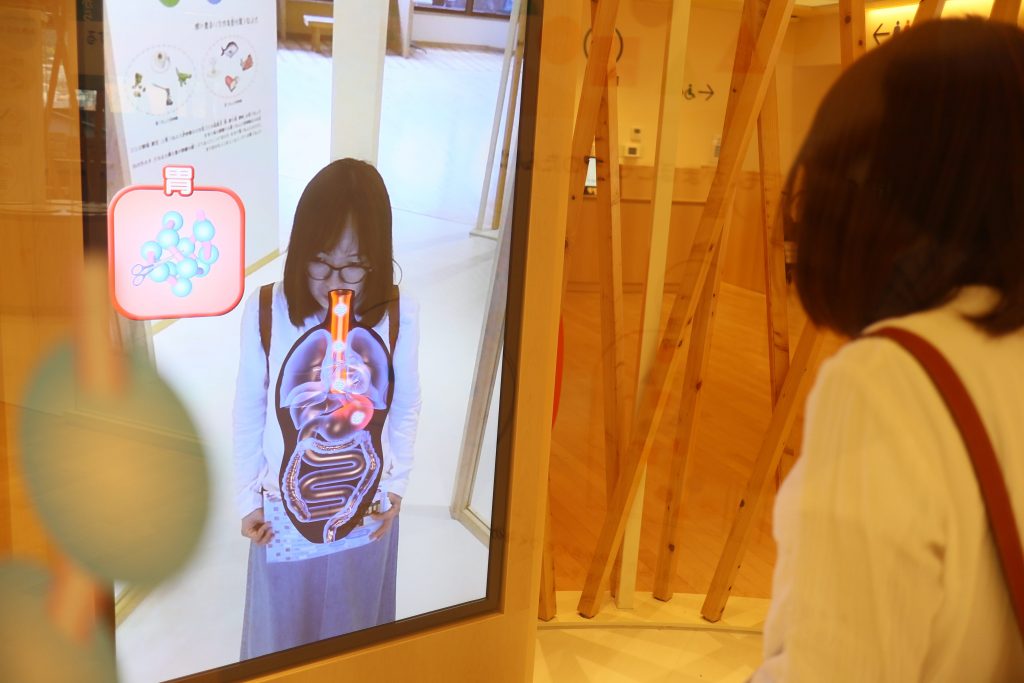
How protein is used in the body. Interesting!
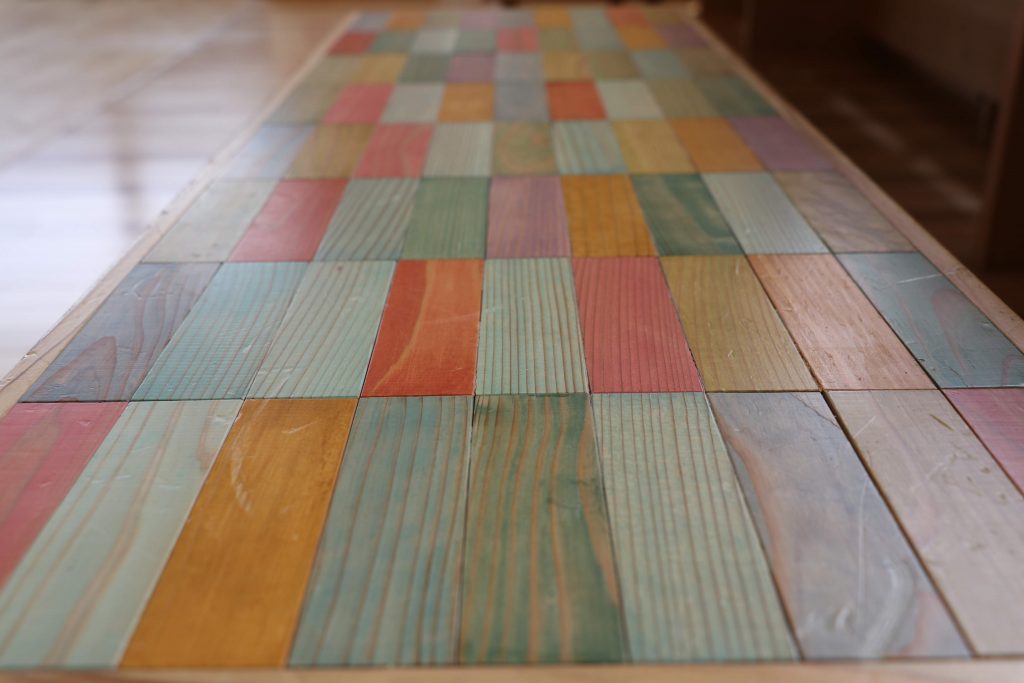
More art here! A chair made out of kamaboko boards.
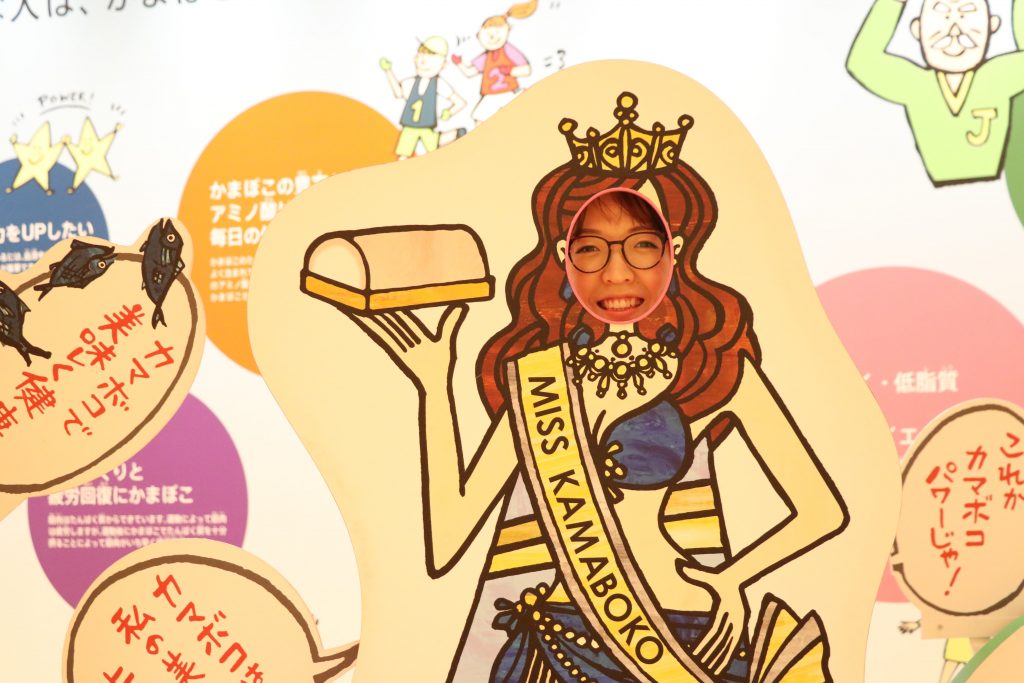
After a fun-filled day, take a commemorative photo!
The kamaboko museum is a lot of fun—there are so many things to see and do. The exhibits employ various interactive technologies to deepen your understanding of kamaboko and food culture. If you come to Kamaboko Village, this is one place you don’t want to miss. The museum can be enjoyed by both children and adults alike, so I highly recommend a visit!
This was my first time experiencing a museum like this centered on food education. The time I spent here was totally worthwhile. I also learned about the education style of Japan.
Suzuhiro Kamaboko Museum
Website:http://www.kamaboko.com/en(English)
Hours:9:00 a.m. to 5:00 p.m.
Closed:January 1st, and other days that may be specified by the facility.
Admission:Free
Hands-on workshops:
① Handmade Kamaboko and Chikuwa Workshop(Held five times daily, not offered on Wednesdays. Participation fee: 1500 yen plus tax)
② Handmade Chikuwa Workshop(Held six times daily, Held five times daily, only Chikuwa Experience offered on Wednesdays. Participation fee: 500 yen plus tax)
③ Kamaboko Kitchen Lab(Held six times daily. Participation fee: 1000 yen plus tax)
*For more information check their homepage
Telephone:0465-24-6262(Available hours: 9:00 a.m. to 5:00 p.m.)
Access:From Odawara Station take the Hakone Tozan Line and disembark at Kazamatsuri Station.
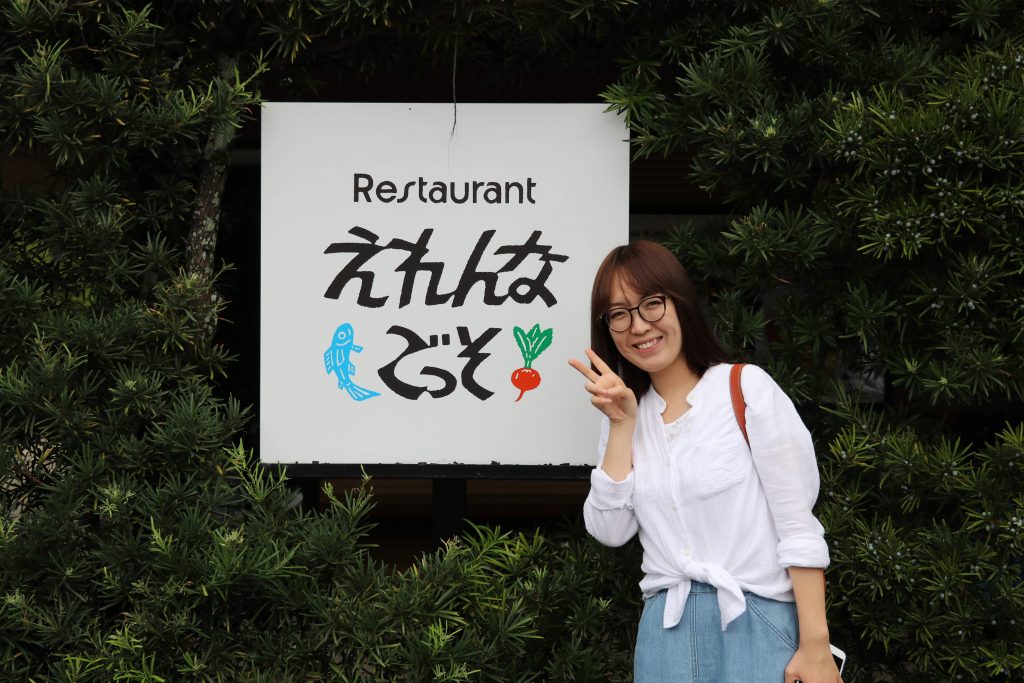
I was so absorbed in the museum that before I knew it I was starving! Since I came all the way to Kamaboko Village, might as well treat myself to all-you-can-eat kamaboko!
Elennagosso is a buffet-style restaurant. You can enjoy ingredients inspired by Odawara’s four seasons, including fruits and vegetables raised in Suzuhiro’s specially produced fertilizer. Here you can eat a lot of dishes made from kamaboko. After you’ve eaten your fill, top it all off with a cold Hakone brew.
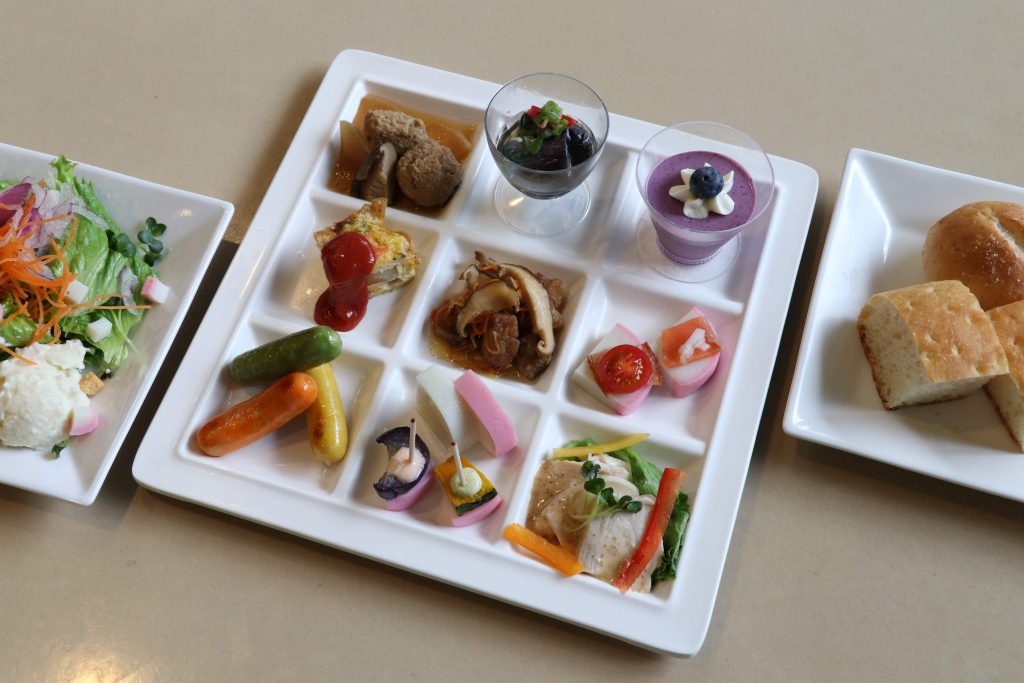
There are so many ways to eat kamaboko!
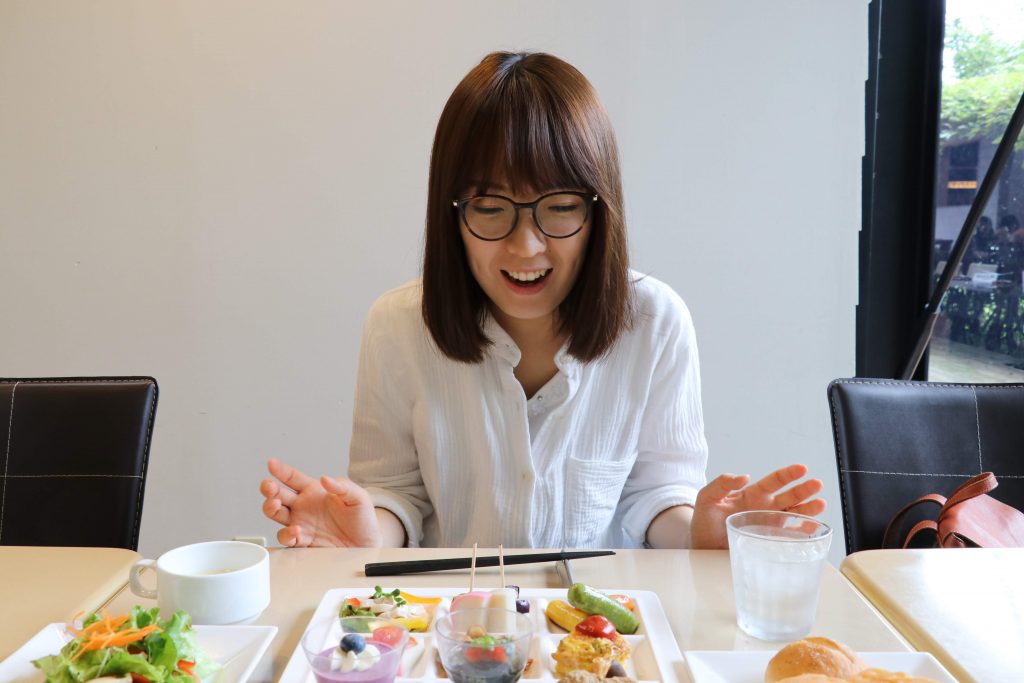
Looks delicious! Itadakimasu!
Kamaboko is delicious on its own, but grilled is also tasty. With the special pickled wasabi, it’s even better! Dining at the high-ceilinged and spacious Elennagossa, I stuffed myself with the tastiest foods I could find. To a glutton like myself, it was heavenly.
As an aside, the origins of kamaboko aren’t known for certain, but in Southeastern Asia there is a food that resembles it. The fish are filleted and salted using the same process the Japanese use.
In China, for example, people all over Hubei Province enjoy a food called yugao, which is Chinese kamaboko. It’s such a famous food in Jingzhou, Hubei Province, that it ranks as one of the top 10 popular foods in the city. It’s primarily eaten on holidays or parties, or when entertaining guests. The ingredients are a little different than those used by the Japanese. In addition to ground fish, egg whites, pork, starch, etc. are also used as ingedients. Because China is such a big place, I, who am from northeastern China, have never tasted the cuisine of the southern province. If I have the chance, I’d like to try Hubei Province’s kamaboko too.
Elennagosso
Website:http://www.elennagosso.com/(Japanese)
Hours
Weekdays:
Lunch 11:00 a.m. to 2:45 p.m.
Sweets and light meal 3:00 p.m. to 5:00 p.m.
Weekends and holidays:
Brunch 9:30 a.m. to 11:00 a.m.
Lunch 11:00 a.m. to 5:00 p.m.
Telephone: 0465-23-7373 (11:00 a.m. to 5:00 p.m.)
Access: From Odawara Station take the Hakone Tozan Line. Disembark at Kazamatsuri Station and walk for two minutes.
Next, let me introduce you to Chouwarou, another famous restauarant at Kamaboko Village. The building that houses Chouwarou is an old-style Japanese house that was taken apart before being moved here and rebuilt. Here you can indulge in a kaiseki or soba meal with tea. Since coming to Japan I’ve seen old-style Japanese homes on the TV before, but never in person, and was lucky to be given a tour around the old building.
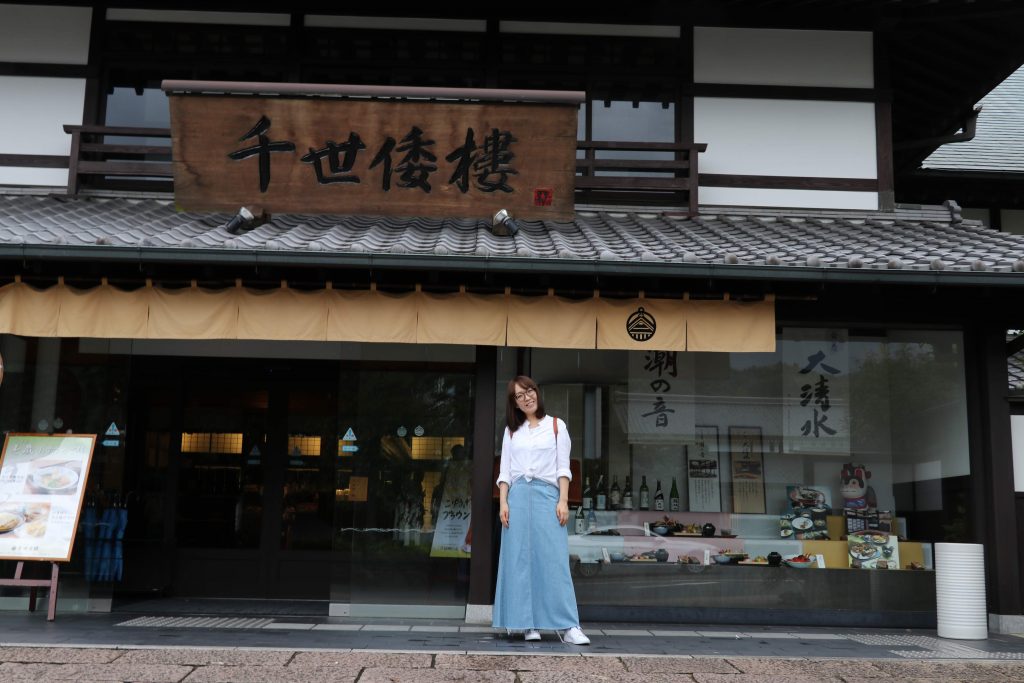
Kicking it back in this old-time atmosphere.
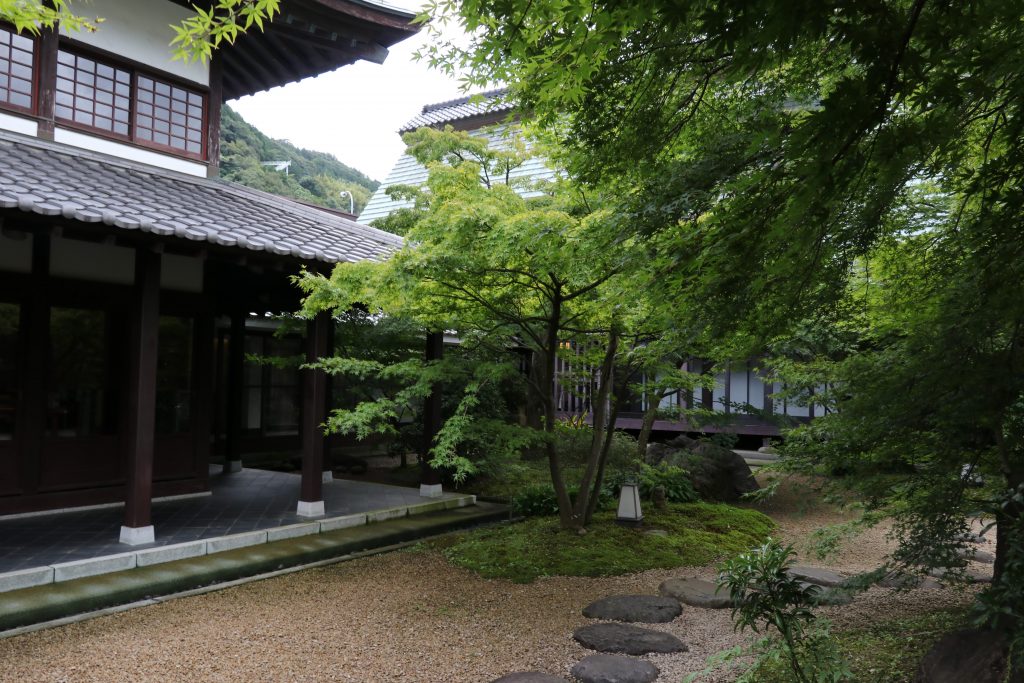
In the fall the garden is reborn in an explosion of burnt reds and yellows.
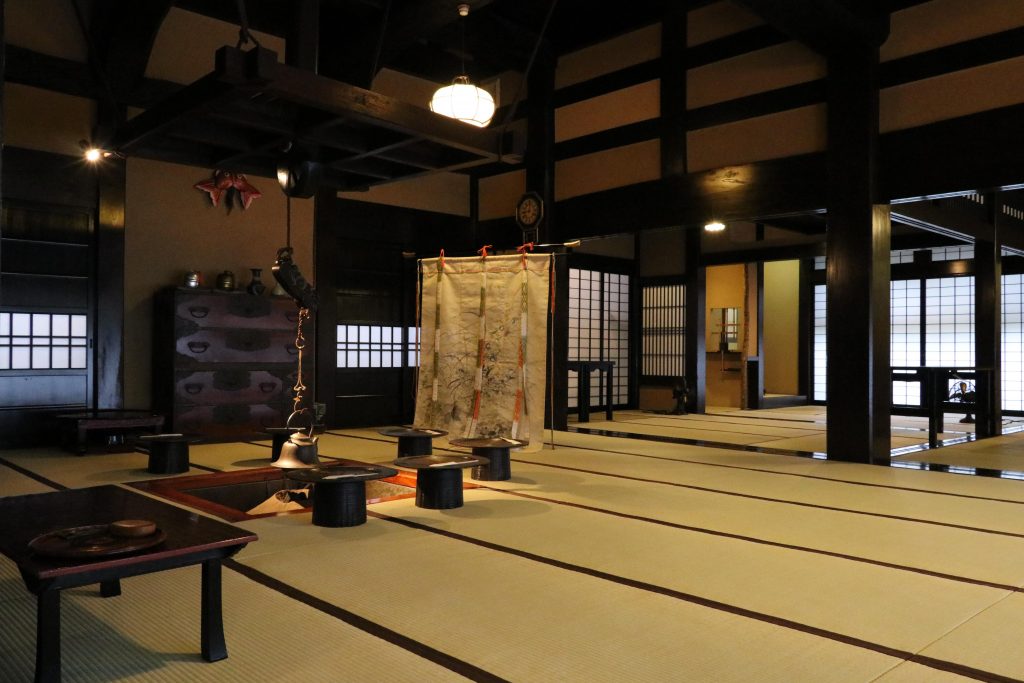
So huge inside! Crazy luxury!
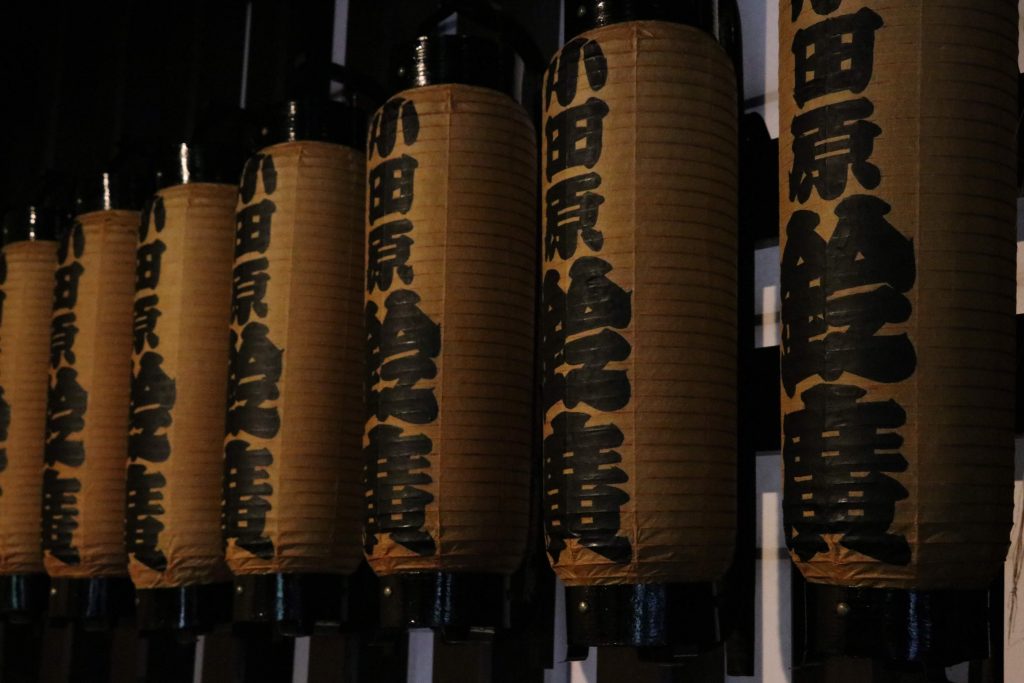
Feels like I'm in the Edo Period.
Chouwarou
Website:http://www.tiowa.jp/(Japanese)
Hours
Shionone course:
Lunch 11:30 a.m. to 3:00 p.m. (Last order 2:00 p.m.)
Oshimizu course:
Lunch from 11:30 a.m. (Reservation required)
Dinner from 5:00 p.m. (Reservation required)
Soba mikura course:Lunch 11:00 a.m. to 4:30 p.m. (Last order 4:00 p.m.)
Telephone:0465-24-3456 (10:00 a.m. to 5:00 p.m.)
Access:From Odawara Station take the Hakone Tozan Line. Disembark at Kazamatsuri Station and walk for two minutes.
Always bustling with activity, Suzunari Market is the most popular attraction at Kamaboko Village. 50 kinds of kamaboko are on sale, including, of course, Odawara’s famous wooden tablet kamaboko, as well as dried fish products, salts, local beers and more. For yourself or as a souvenir, you’re sure to find something that piques your interest.
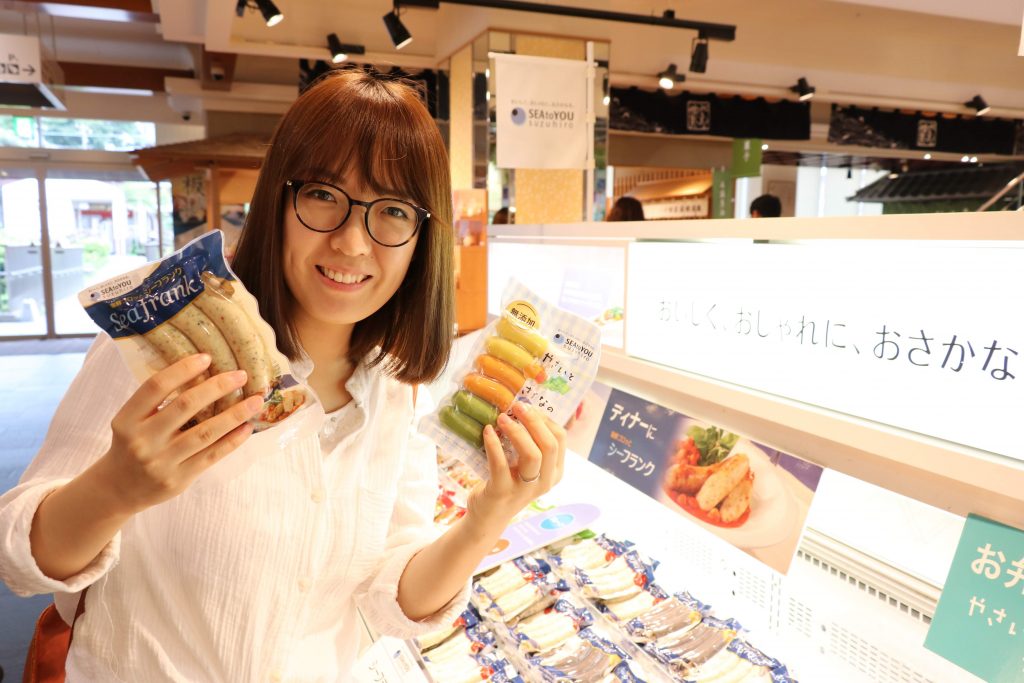
These were so good!
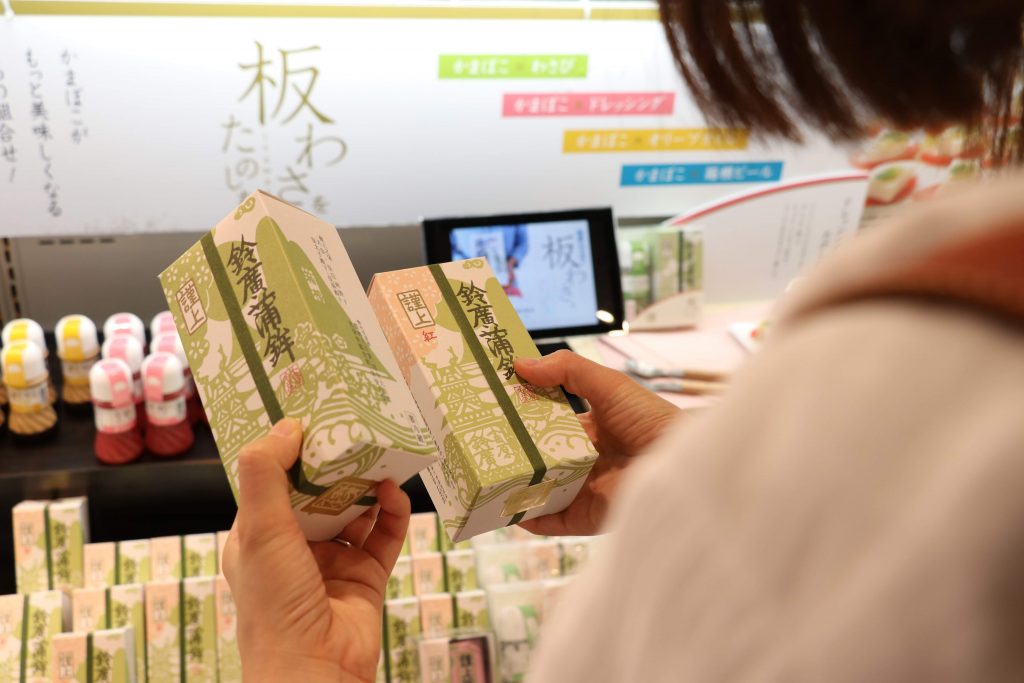
A popular brand of kamaboko: Kinjo Kamaboko Red and White
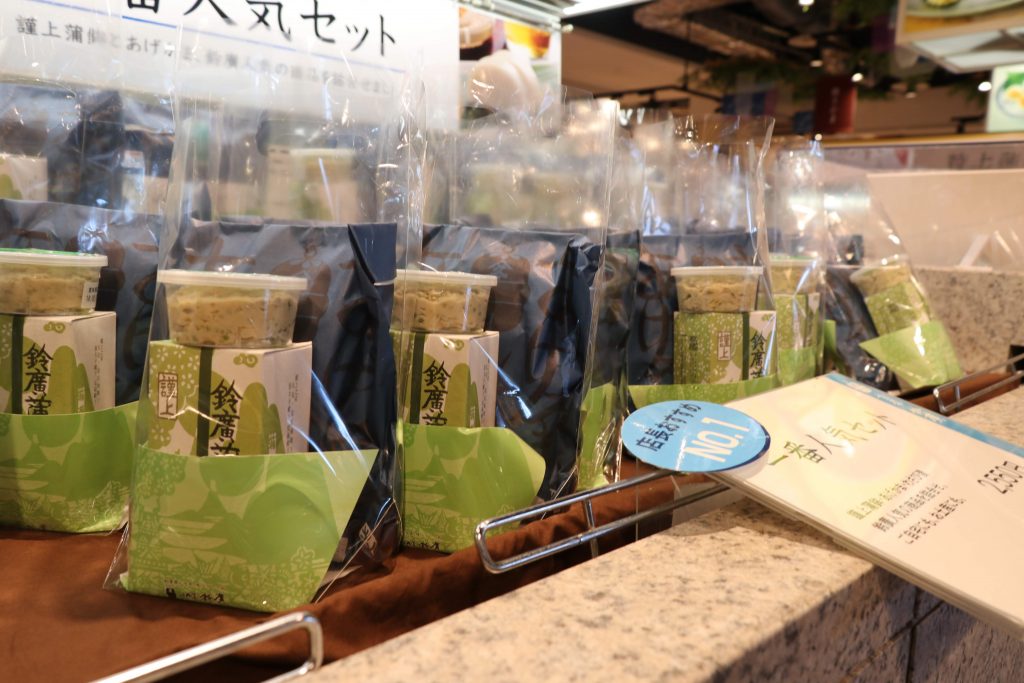
The shop manager recommended this, and so do I! A gift basket of popular items: kinjo kamaboko, fried kamaboko, and pickled wasabi.
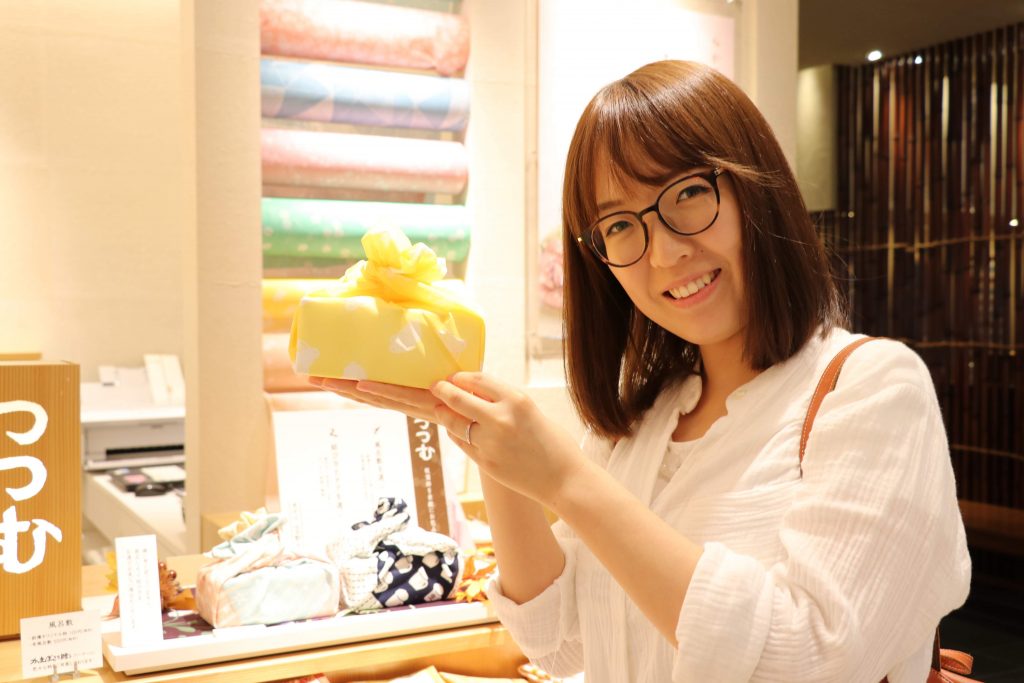
Look how beautifully they wrapped this souvenir I got as a gift
I’m so happy I was able to get some great souvenirs.
This wraps up my day trip to Kamaboko Village! On my way home, I’ll stop by the Kamaboko Museum to pick up the kamaboko I made.
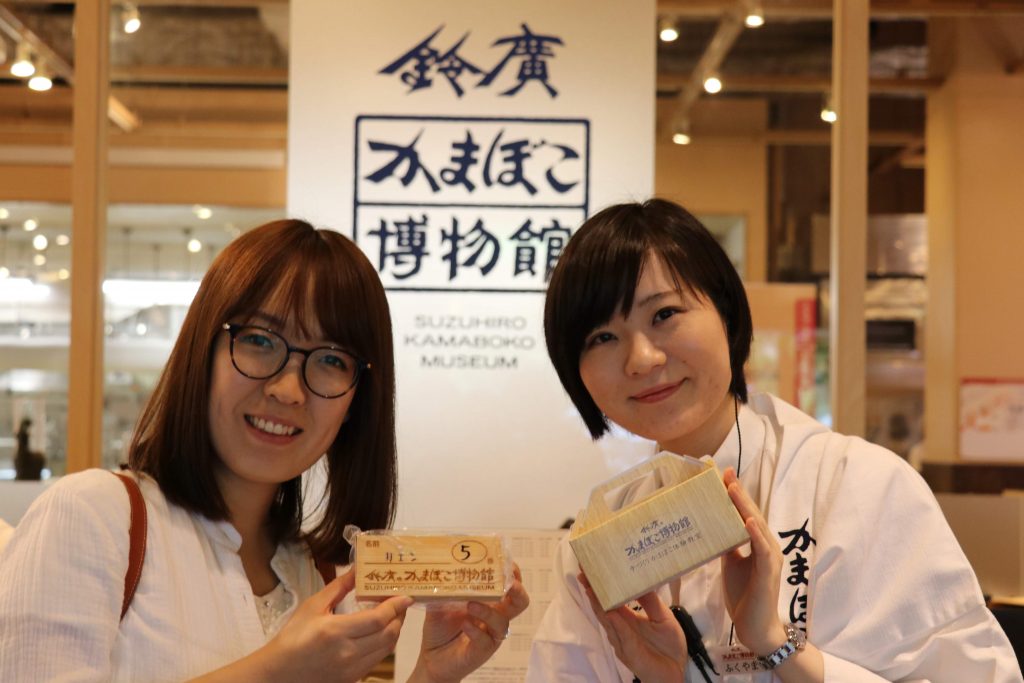
This staff member was so cute and nice!
The staff are so nice and will take good care of you, so you can relax and have a good time. If I have the chance, I’d like to come here again with friends. I had a really good time. Seeing the Japanese put everything they have into preserving tradition, it’s plain to see that traditional culture here will flourish far into the future. Couldn’t it be said that one characteristic of Japanese culture is its rich and long history? I feel a renewed sense of wonder toward Japanese culture.
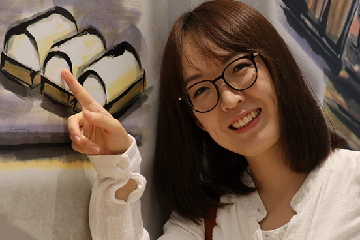
written by Li-Yan
I am interested in Japanese culture and am currently trying out many different things in Japan. I would like many other foreign nationals to get to know the amazing things about Japan that I was able to experience myself. If you are interested in the traditional Japanese food, kamaboko, you should definitely check out the restaurant, Suzuhiro Kamaboko-no-Sato. Over there, you will definitely be able to fully experience the charm of kamaboko.